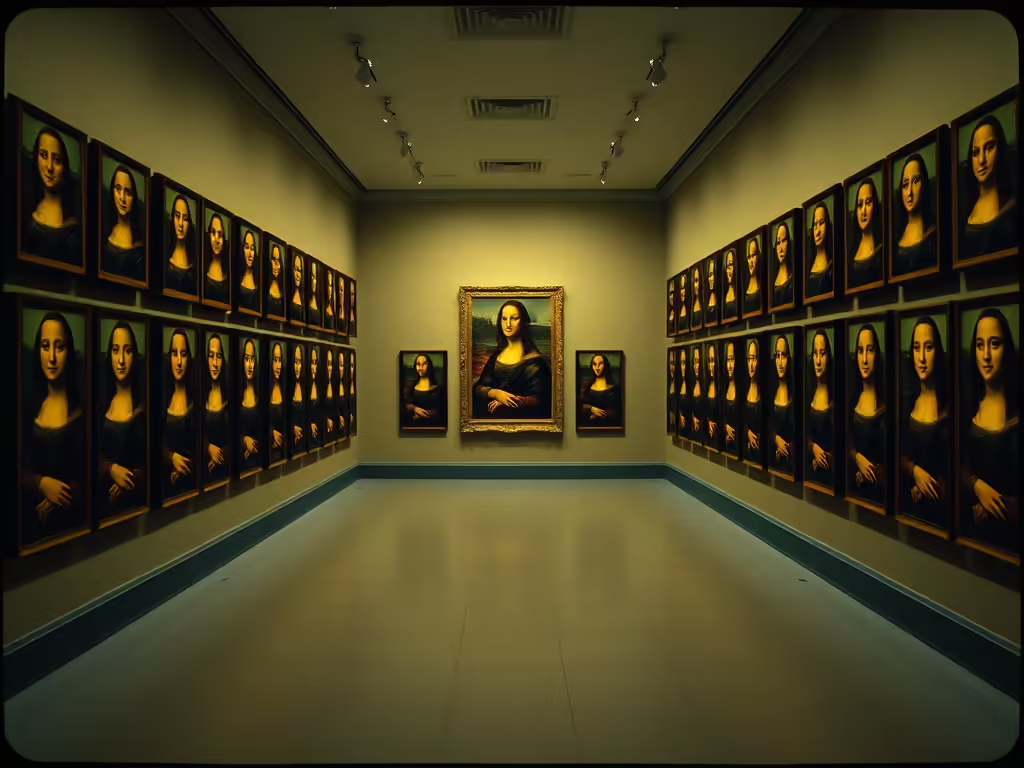Is AI Making Artistic Creation more Homogeneous? Or is it a Human Problem?
Are We Losing Originality to AI?

AI has woven itself into the fabric of creative fields—from music production and visual arts to writing and even fine arts. While it brings unparalleled convenience, accessibility, and efficiency, it also raises questions about originality. As more artists across disciplines, both digital and traditional, embrace AI-powered tools, we’re left wondering: Is AI making art, music, and writing too uniform? Are we losing the spark of human touch and individual expression? Let’s dive into the evolving landscape of creativity in the AI era, unpacking its promises, pitfalls, and the quest for balance.
The Upside of AI: A New Creative Partner
AI has become a powerful ally for creators, offering fresh ways to tackle artistic challenges and expand their skill sets. Whether you’re a musician crafting beats, a painter experimenting with digital landscapes, or a writer breaking through a block, AI can help with repetitive tasks, generate new ideas, or even fill in creative gaps.
1. Efficiency and Accessibility
AI technology makes once-difficult tasks accessible to everyone. Music software can generate complex melodies, visual art programs allow for seamless photo manipulation, and writing assistants can organise ideas in minutes. This democratises creativity, empowering people with minimal training to start producing their own content, and it’s opening up the arts to diverse perspectives.
2. AI as a Springboard, Not an Answer
Instead of replacing the artist’s vision, AI often acts as a collaborator or assistant. For instance, visual artists might use AI to sketch an outline, and then add unique elements to bring it to life. Writers can ask AI to generate ideas but maintain their voice throughout the piece. In music, a producer might use AI-generated beats as a foundation to build an original composition. By combining human creativity with AI’s technical precision, artists can push boundaries and reach new creative heights.
Homogenisation: The Copy-Paste Effect of AI in Art and Culture
While AI can enhance creativity, there’s a growing concern that it could lead to a “copy-paste” effect across artistic domains. Since AI relies on pre-existing data, it often replicates trends and styles rather than innovating. This could mean that a painting created with AI assistance resembles the latest digital art fad, or that a beat sounds strikingly similar to every other chart-topper.

1. Trapped in Data Loops
AI algorithms are trained on massive datasets, most of which are rooted in past styles, themes, and preferences. Consequently, they excel at producing iterations of what already exists, rather than breaking new ground. This can reinforce established trends and make unique voices harder to distinguish, as algorithms are more likely to follow patterns than to forge new artistic paths.
2. A Uniform Sound and Style
In music, we’re beginning to hear more tracks with similar beats and tonal progressions. AI-driven software can compose music that fits a certain genre or “vibe,” but the result often lacks the raw energy of human-created work. The same can be seen in digital art, where algorithms frequently create highly stylised yet somewhat repetitive pieces that draw on similar aesthetics, colours, and composition structures. For writers, AI might produce grammatically correct but somewhat flat prose, missing the emotional nuances or daring expressions a human writer brings.
Emotional Resonance: Can AI Really Feel Art?
One area where AI consistently falls short is in emotional expression. Artistic works—from a soulful song to a powerful painting—are often the result of an artist’s lived experience, emotions, and cultural influences. AI, however, doesn’t experience life, emotions, or culture, which can leave its creations feeling hollow.
1. Music’s Emotional Undercurrent
In music, especially, emotional connection plays a vital role. An AI may assemble a catchy tune or seamless beat, but it can’t replicate the depth of feeling that comes from personal experience. Listeners connect with songs because they convey emotions that resonate with them. Without that human touch, music risks becoming more of a product than an art form, a collection of sounds without a soul.
2. Visual Art and the Intangible “Why”
In visual art, AI can create technically impressive images and imitate various styles, but it lacks the “why” that drives most human artists. Each brushstroke, colour choice, and composition in human-created art can be deeply intentional, often carrying layers of meaning or a message. AI-generated art, while visually appealing, may not connect with viewers in the same way because it lacks that underlying purpose and intent.
The Balance of Technology and Individuality in Art and Writing
The benefits of AI in creative processes are undeniable, yet a crucial balance must be struck to prevent creativity from being replaced by conformity. For many artists, writers, and musicians, this means using AI as a springboard for ideas rather than as a substitute for their own vision.
1. Creatives Taking Control
Many creators are consciously choosing how to integrate AI into their work. For instance, some musicians might let AI handle the repetitive beats or generate ideas, but reserve the melody, lyrics, or instrumental choices for themselves to keep a personal touch. In writing, an author may use AI to overcome a block or edit a rough draft but makes sure their voice shines through in the final version.
2. Preserving the Unexpected
True creativity often involves taking risks, defying trends, and exploring unexpected directions. This unpredictability is where human artistry truly shines. Artists and writers who use AI tools selectively can take the benefits of automation without sacrificing what makes their work distinct. In fields like acting, the lack of AI-driven influence allows for pure human expression, reminding us that digital tools, while valuable, aren’t necessary for all creative forms.
Embracing AI Without Sacrificing Originality
Personally, I’m an AI enthusiast and see it as one of the most groundbreaking tools humans have created—a true revolution in the digital era. It surprises me, though, to hear so many people, in the media or even on the street, expressing concern over AI’s advancement and potential. It’s as if people forget that AI was invented by humans, for humans. I doubt anyone worried when prehistoric humans invented the wheel, or when the first cars hit the road. Our vision of AI often seems skewed by the sci-fi fantasies of the 60s and 70s, where AI takes over the world. But that’s purely science fiction. AI is a tool meant to help us, not control us.
However, when it comes to creativity, AI has its limits. While it can generate artistic content or assist in writing, it can’t replace the originality and unique perspective of a human creator. In the digital age, AI and internet trends have started to homogenise ideas and content, making everything feel a bit too similar. AI can be a fantastic tool to automate tasks, streamline workflows, and improve efficiency, but we can’t forget that creativity itself—those fresh ideas—comes from us. AI can support the creative process, helping with research and organisation, but it’s not a substitute for the human artist or writer whose vision drives the work.
As AI continues to evolve, it will undoubtedly reshape how we create, but it’s ultimately up to artists, musicians, and writers to decide how much of their work they’re willing to let AI influence. AI can streamline processes, spark ideas, and make creativity more accessible—but it’s not a replacement for the human element that gives art its depth, emotion, and originality.
Moving forward, the challenge for creatives across disciplines will be to embrace AI’s capabilities without allowing it to erase their individuality. By using AI as a tool rather than a creative crutch, we can ensure that art, music, and writing continue to thrive with diversity and genuine expression.
In a world where AI is reshaping creativity, let’s keep in mind that the heartbeat of art still lies in the human experience.
Looking forward to hear your opinions. Don’t hesitate to left your comments and opinions.
Discover more from VBM Contents 2024 ©
Subscribe to get the latest posts sent to your email.


